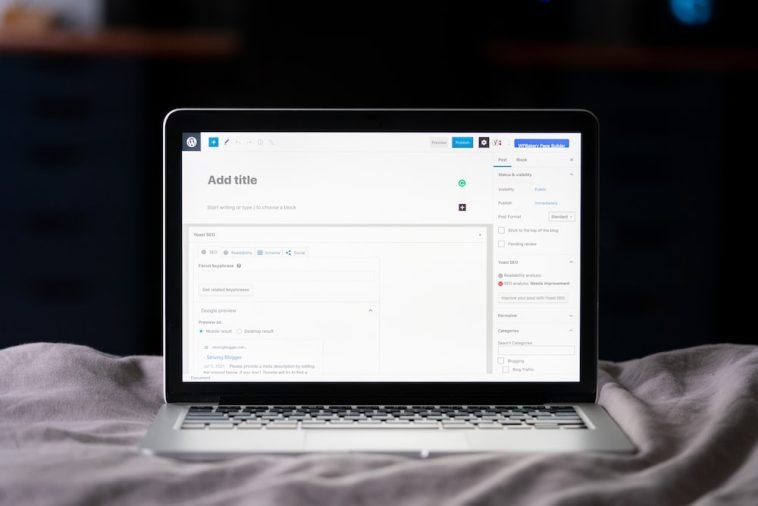Introduction.
When it comes to driving traffic to a blog, the options can be overwhelming.
Should you focus on search engine optimization (SEO), social media marketing (SMM), public relations (PR), or some other method?
Each of these strategies offers unique benefits, but the best approach often depends on your specific goals, audience, and resources.
For example, SEO is great for building long-term, sustainable traffic by improving your blog’s visibility on search engines like Google.
Social media marketing, on the other hand, can quickly boost your reach by leveraging platforms where your audience already spends time.
PR efforts can enhance your credibility and drive traffic through media coverage.
Understanding how these methods work together — and how to prioritize them — can make all the difference in turning a blog from a side project into a traffic powerhouse.
What Is The Best Way To Get Traffic On Your Blog: SEO, SMM, PR?
Growing traffic to your blog can feel like a juggling act, especially when there are so many strategies to choose from.
Whether you’re just starting or looking to scale, it’s crucial to understand which methods will give you the best return on your time and effort.
Let’s break down the main options: SEO (Search Engine Optimization), SMM (Social Media Marketing), and PR (Public Relations), among others, to figure out what might work best for your blog.
1. Search Engine Optimization (SEO).
SEO is all about getting your blog posts to rank high on search engines like Google.
When your blog ranks well, it naturally attracts visitors who are searching for content similar to what you offer.
Why SEO Is Powerful:
- Long-Term Traffic: Once your posts start ranking, they can continue to bring in traffic for months or even years without additional effort.
- High Intent Visitors: People searching for specific keywords are often ready to engage deeply with your content, whether that means reading your posts, signing up for your newsletter, or even buying a product.
- Cost-Effective: Although SEO requires an initial time investment, it’s relatively cost-effective since organic traffic is free.
Challenges with SEO:
- Competition: Popular keywords can be highly competitive, making it difficult for new blogs to rank.
- Constant Updates: SEO isn’t a set-it-and-forget-it strategy. You’ll need to stay updated on algorithm changes and adjust your tactics accordingly.
- Time-Consuming: Seeing results from SEO can take months, especially for new websites.
Best Practices for SEO:
- Keyword Research: Use tools like Ahrefs or Google Keyword Planner to find keywords with a balance of decent search volume and lower competition.
- Quality Content: Create in-depth, valuable content that genuinely answers the questions your audience is asking.
- On-Page SEO: Optimize your titles, meta descriptions, headers, and images for your target keywords.
- Backlinks: Focus on building high-quality backlinks from reputable sites, as they can significantly improve your rankings.
2. Social Media Marketing (SMM)
Social media platforms like Facebook, Twitter, Instagram, and Pinterest can be powerful tools to drive traffic to your blog.
Each platform has its audience, and choosing the right one depends on where your target readers hang out.
Why SMM Is Effective:
- Immediate Traffic: Social media can drive traffic to your blog as soon as you publish a new post.
- Engagement and Community Building: Social platforms allow you to engage directly with your readers, building a loyal community around your blog.
- Visual Appeal: Platforms like Instagram and Pinterest can be great for blogs that rely on visual content, such as food, travel, or fashion blogs.
Challenges with SMM:
- Time-Intensive: Maintaining a consistent presence across multiple platforms can be time-consuming.
- Algorithm Changes: Like SEO, social media platforms frequently update their algorithms, which can impact your reach.
- Short-Lived Content: Posts on social media have a short lifespan, especially on platforms like Twitter, where content can disappear from feeds quickly.
Best Practices for SMM:
- Choose the Right Platforms: Focus on the social media channels where your target audience is most active.
- Consistent Posting: Regularly share your blog content and engage with your followers to keep your blog top-of-mind.
- Leverage Visuals: Use high-quality images, infographics, and videos to capture attention.
- Paid Advertising: Consider boosting your best-performing posts with paid ads to reach a larger audience.
3. Public Relations (PR).
PR involves getting your blog featured in media outlets, blogs, podcasts, or influencer platforms.
This strategy can give your blog credibility and expose it to a broader audience.
Why PR Works:
- Credibility Boost: Being featured in reputable publications can establish you as an authority in your niche.
- Broader Reach: PR can introduce your blog to a wider audience who might not find you through SEO or SMM.
- Backlinks: Media features often come with backlinks to your site, which can improve your SEO.
Challenges with PR:
- Difficult to Secure: Getting featured in high-profile publications can be challenging, especially if you’re just starting.
- Requires a Pitch: You’ll need to craft compelling pitches to catch the attention of journalists or influencers.
- Uncertain ROI: The return on investment with PR can be unpredictable, as it depends on the publication and audience.
Best Practices for PR:
- Build Relationships: Network with journalists, bloggers, and influencers in your niche to increase your chances of being featured.
- Create Newsworthy Content: Offer unique insights, data, or stories that are relevant to the current media landscape.
- Pitch Smartly: Tailor your pitches to each publication or influencer, focusing on what their audience would find valuable.
4. Other Strategies to Consider.
Beyond SEO, SMM, and PR, there are other ways to drive traffic to your blog:
- Email Marketing: Building an email list allows you to directly reach your readers whenever you publish a new post.
- Guest Blogging: Writing for other blogs can introduce your content to new audiences and earn valuable backlinks.
- Content Syndication: Republishing your content on platforms like Medium or LinkedIn can expand your reach.
- Collaborations: Partnering with other bloggers or influencers in your niche can help you tap into their audience.
What’s the Best Strategy?
There isn’t a one-size-fits-all answer. The best strategy depends on your niche, audience, and goals.
For long-term traffic, SEO is essential. If you’re looking for immediate engagement and community building, SMM is the way to go. PR can be incredibly powerful if you can secure the right features.
For most bloggers, a mix of these strategies works best. Start with SEO to build a solid foundation of organic traffic, then layer on social media marketing and PR as you grow.
Experiment, measure your results, and adjust your approach as needed. Traffic generation is a marathon, not a sprint, so be patient and persistent.
If you’re serious about growing your blog, it’s worth investing time in learning and applying these strategies.
With the right approach, your blog traffic can soar, opening up new opportunities for engagement, influence, and revenue.
Conclusion.
So, which is the best way to get traffic to your blog: SEO, SMM, or PR? The answer is… it depends.
Each method has its strengths and weaknesses, and the best approach for you will depend on your specific goals, resources, and target audience.
SEO is a great long-term strategy for building organic traffic. It can be time-consuming, but it’s a worthwhile investment if you’re willing to put in the effort.
SMM is a great way to connect with your audience and build a community around your blog. It’s a relatively low-cost option, but it can be time-consuming to maintain.
PR is a great way to get your blog featured in high-profile publications. It can be difficult to land PR placements, but it can be a great way to boost your credibility and reach a wider audience.
The best approach for you will likely be a combination of all three methods.
By using a mix of SEO, SMM, and PR, you can reach a wider audience and drive more traffic to your blog.
What do you think? Which of these methods is the most effective for you? Share your thoughts in the comments below.





GIPHY App Key not set. Please check settings